
山ばな平八茶屋
Yamabanaheihachidiya ◆ やまばなへいはちぢゃや
3.56
Ichijō-ji, Shugakuin
「Japanese Cuisine」
15,000-19,999円
4,000-4,999円
Opening hours: Dining Lunch: 11:30-15:00 (enter by 13:30) Evening: 17:00-21:30 (enter by 19:00) Check in for overnight stay 16:00-19:00 Check out 10:00 the next morning Open Sunday
Rest time: Wednesday, etc.
京都府京都市左京区山端川岸町8-1
Photos
(20)


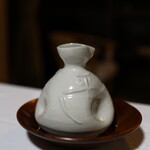
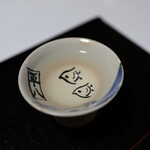



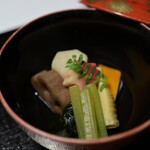



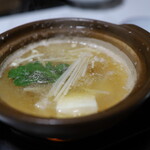








Details
Reservation Info
can be reserved
Children
Children are allowed (infants, preschoolers, elementary school students), children's menu available
Private rooms are also available. Please be considerate of other guests in case of large rooms. Reservations for children's menus are required by the day before.
Payment Method
Credit cards accepted
(VISA, Master, JCB, AMEX, Diners)
Electronic money is not accepted.
Restaurant Service Fee
Kaiseki cuisine is subject to a 15% service charge.
This fee is charged by the restaurant, not related to our platform
Number of Seats
170 seats
(Great hall: up to 60 people)
Private Dining Rooms
Yes (2, 4, 6, 8, 10-20, 20-30, 30 or more)
(Can accommodate 2 persons, 4 persons, 6 persons, 8 persons, 10 to 20 persons, 20 to 30 persons, 30 or more persons)
There are two types of seating available: tatami room with chairs and tables, and tatami room with cushions. Available for one person or more.
Smoking and Non-Smoking
No smoking in the garden.
Parking
Yes
10 passenger cars or 3 large buses can be parked.
Facilities
Calm space, tatami room available
Drink
Sake available, shochu available, wine available
Dishes
Stick to vegetable dishes, fish dishes.
Comments
(16)
natsu.maron.sora.coco
4.00
I visited for the Gion Festival foot washing ceremony and had the "ayu kaiseki" meal. The menu had "ayu rice," but I asked to change it to the famous "barley rice with tororo soup." I forgot to take a picture of the rice. The meal included ayu sushi, ayu sashimi, grilled ayu, and fried ayu, which was a unique and delicious experience as I rarely eat ayu except for grilled. This restaurant is a bit high-end for the average person, so I wonder when I can visit again... If I have the chance, I would definitely like to go back. Thank you for the wonderful meal.




関西パンとスイーツ
3.50
I made a reservation for lunch. There were two floors, and we were seated in a spacious room on the second floor. It was a large room, but there was only one other group of customers before us, and once they left, we had the room to ourselves in a calm atmosphere. We reserved the "Kyoto-style Grilled Eel Bowl with One Whole Eel," which requires advance reservation. It costs 5,500 yen and comes with a whole eel from Aichi Prefecture, along with grated yam soup, side dishes, liver soup, and dessert. The eel was grilled in a crispy Kansai style, with a fragrant and not too strong sauce, making it easy to eat despite being a whole eel bowl. The dessert, a tofu pudding, had a sweet black syrup topping and a light agar jelly-like texture, making it easy to enjoy. I went with a friend this time, but it would also be a wonderful space for a relaxing meal with family.




kinako-anko
4.20
On May 27, 2022, I suddenly decided to upload on Instagram about my spring excursion to Kyoto, where I enjoyed the "Ao-momiji" (green maple leaves) at Rurikoin Temple. About half a year ago, I had enjoyed the vibrant autumn leaves reflecting on the writing desk on the second floor of the study hall, and the green maple leaves were equally wonderful. After visiting Rurikoin Temple, I took a 5-minute walk to the Yase Cable Hiei Station and strolled through the Yase Momiji Path, enjoying a forest bath. While walking, I made a lunch reservation over the phone and then took the Eizan Electric Railway to get off at Shugakuin Station, three stops away. After a 5-minute walk, I arrived right on time for my reservation at "Yamabana Heihachi Teahouse," a long-established ryotei in the northern part of Kyoto with a history dating back nearly 450 years, originating as a roadside teahouse on the Wakasa Kaido during the era when Oda Nobunaga was active. Passing through the Kigyu-mon gate, I entered a different world, with an atmosphere of lush greenery in the approximately 600-tsubo Japanese garden, which was truly amazing. I was guided to a small room in the lodging building, where I enjoyed the following:
- Kirin Lager Beer in a bottle for 880 yen
- Lunch Kaiseki for 8,800 yen
- Mugitoro Manju (steamed bun with barley and yam)
- Sansai and shimeji mushrooms ohitashi (boiled dish)
- Tai (sea bream) kosode sushi
- Tori no matsukaze (chicken dish)
- Mame no mochikoshiage (deep-fried mochi with beans)
- Satsuma-imo no mitsuni (sweet potato simmered in honey)
- Suimono (clear soup) with tororo tofu, shiitake mushroom, and white wood ear fungus
- Yakimono (grilled dish) with salmon, vinegar lotus root, and karabuki
- Agemono (fried dish) with grilled sea bass, shishito pepper, shiitake mushroom, and small eggplant
- Sunomono (vinegared dish) with shirataki noodles, sasakaki burdock, and renkon and edamame in white vinegar
- Gohan (rice) with barley rice and tororo soup
- Koubutsu (pickles)
- Mizumono (dessert) with white wine jelly of kiwi, orange, strawberry, and pomegranate juice
There were five options available for lunch, ranging from the 3,850 yen "Mugitoro Zenzai" to the 8,800 yen "Lunch Kaiseki," and I opted for the most luxurious choice of the "Lunch Kaiseki." The 6-tatami room was equipped with a large table and chair seating, which was convenient for elderly people with mobility issues. From the glass window, I could see the Takano River flowing in front of Rurikoin Temple, and I could spot a cormorant resting its wings in the murmuring river, possibly flying in from Lake Biwa. Young staff members in kimono brought the dishes to the small room promptly, and I also received a courteous greeting from the head proprietress and the proprietress. First, I was served tea and the "Mugitoro Manju," a specialty of the teahouse. The steamed bun made in honor of the teahouse's famous "Barley Rice Tororo Soup" was filled with a refreshing sweet red bean paste made from domestic azuki beans and wrapped in a thin skin containing yam. It had a single roasted barley grain on top, and it was so small that I finished it in one bite. I wish I had bought some as a souvenir! Soon after, the "Hassun" (starter) and a cold bottle of beer arrived. The seasonal fish and seasonal vegetables-based lunch-only Kaiseki meal consisted of eight dishes, including the famous "Barley Rice Tororo Soup" and a dessert. It was a heartwarming and comforting meal, not the dazzling Kyoto cuisine, with a traditional arrangement. The teahouse's specialty "Barley Rice Tororo Soup" has been said to have been served by the first Heihachi since the teahouse's founding. Travelers passing through the Wakasa Kaido (commonly known as the Mackerel Highway) would take a brief rest at this teahouse one mile from the capital, then fortify themselves with the "Barley Rice Tororo Soup" before leaving Kyoto. The high-quality Tanba-grown tsukune yam was meticulously grated in a large mortar about 50 cm in diameter, using a secret broth made from Hokkaido Rebun Island's natural Rishiri kombu and Kagoshima's Makurazaki-sourced dried bonito flakes. The more it was stretched with this broth, the finer the texture became, making it even smoother and more sticky. The slightly whitish...




魔欄
4.50
During my tour of sites related to the Shinsengumi in Kyoto, I had the opportunity to visit this traditional restaurant amidst the backdrop of the Wuhan virus pandemic originating from China. With a history spanning 400 years, this prestigious establishment has been beloved by various cultural figures. Upon passing through the charming Kikyomon gate, a splendid garden unfolds before you, leading to a private room where I was seated. I couldn't help but imagine the Shinsengumi warriors causing trouble here in the past, perhaps even dining without paying. As I listened to the gentle babbling of the river, lunch began. The steamed bun, a long-standing item on the menu, was a delight to savor. From the appetizers to the main course, spring ingredients were generously used in each dish, beautifully presented and pleasing to the palate. While Kyoto cuisine is often associated with subtle flavors, this restaurant managed to bring out the natural essence of the ingredients. Despite the variety of dishes, I didn't feel overly full. A highlight of the meal was the famous grated yam soup, which paired excellently with the barley rice. It was truly delicious, and imagining the Meiji-era patriots enjoying the same meal filled me with a sense of awe. The timing of each dish's arrival was impeccable, and the hostess even offered a polite farewell. I was shown scars from the Shinsengumi's swords, adding to the rich history of this longstanding establishment. Truly a venerable institution with centuries of tradition.




玉かずら
4.00
Founded in the first year of the Tensho era, Hachihachi Tea House is a historic establishment in Kyoto. As you venture further north in Kyoto, you can feel the power of the surrounding mountains and hear the gentle murmuring of the Takano River, creating a rich natural environment. Established as a teahouse along the Wakasa Highway (now Kawabata Street) during the Azuchi-Momoyama period, Hachihachi Tea House is steeped in history. Passing through the symbolic Kigyumon gate, you'll find yourself on a stone path leading to a winding garden. The detached tatami rooms are lined along the river, offering a tranquil setting. I was guided to one of these rooms, where I could catch glimpses of the Takano River flowing by. The atmosphere is enchanting at night, but during the day, there is also the pleasure of admiring the scenery in the bright sunlight. The environment suits my taste perfectly. The private tatami room comes with its own restroom, adding to the comfort. While Hachihachi is known for its Kaiseki cuisine, I opted for a more standard seasonal menu on this occasion. My impressions are as follows: The dishes are traditional but well-executed, and I appreciate the attention to detail in the tableware. The service is outstanding, the drink prices are reasonable, and there are plenty of private room options, making it ideal for the current pandemic situation. Many courses include the famous tororo rice as the finale, and the portion sizes exceeded my expectations. The restaurant is easily accessible from the city center, surrounded by a beautiful natural environment. The food and drinks are reasonably priced, and the sense of security while dining here makes it a sure bet for future visits. As for the menu, I started with the specialty tea cakes inspired by the tororo rice, followed by a multi-course meal featuring dishes like boiled watercress and shimeji mushrooms, rice dumplings, tender octopus, red and white yam, assorted sashimi, egg tofu in whitefish broth, miso-grilled sawara, sea bream hot pot, lotus root, shrimp, butterbur, bamboo shoots, and seaweed, topped off with barley rice and tororo soup. The bill came to a total of 800 yen for the Aramusha sake, 800 yen for the Matsuzakume sake, and 2200 yen for the Reishu Furumachi sake, plus service charge and consumption tax.




lambsy1106
4.10
The Gyuji at Wakasa Kaiseki is exquisite. Especially the crispiness of the skin is an incredible skill. The barley rice porridge is also wonderful, making you feel the history of over 400 years, and the service is very polite. I would love to stay here next time. It's a unique restaurant that you can't experience anywhere else in Tokyo. Also, the story of Iwakura Tomomi and the Shinsengumi is interesting, and I recommend it to fans of the Bakumatsu period. The atmosphere, garden, and view are all fantastic.



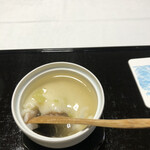
放蕩むすこ
4.00
I watched the "Ouchi de Ryotei Gohan" series on YouTube and suddenly realized that the first ryotei (traditional Japanese restaurant) I ever visited was this place! I had been thinking about going back for a while, and it happened sooner than I expected (laughs). It has been 16 years since my last visit. This restaurant is famous for its Tajima guji (sweet sea bream) dish, and the exterior of the restaurant remains the same, bringing back nostalgic feelings. Due to the COVID-19 situation, reservations were required, so this time I reserved the Tororo Zen and Kyoto vegetable bento. Just like last time, we dined in the large first-floor tatami room, but this time they had set up tables and chairs instead of cushions on the tatami, probably for the elderly guests. The Tororo Zen consisted of Tororo made from Tajima Tsukune Imo (mountain yam), and the vegetable bento included fried dishes, pickles, and simmered dishes, all of which I enjoyed very much. The landlady welcomed us and saw us off with great care, providing excellent hospitality throughout. Truly a reputable establishment.




akane927
4.00
A long-established inn that has been around since 440 years ago (Azuchi-Momoyama period). It was mid-December, but there were still some autumn leaves remaining, making the view from the room and outside very beautiful. For dinner, we had the Wakasa course, which included a specialty dish called tororo rice. The tororo rice exceeded our expectations in terms of deliciousness - it was the best tororo rice we've ever had! Even though we were full, we couldn't resist having seconds of the barley rice... The dishes were simple yet meticulously prepared, allowing us to fully enjoy Kyoto cuisine. Kyoto is truly amazing. For breakfast, we had dashimaki tamago, warm tofu, grilled fish, red miso soup, and rice - a simple menu that left us completely satisfied! Whenever we visit Kyoto, we must have dashimaki tamago and tofu! Surprisingly, this old Kyoto inn is child-friendly. They even let us have a private kamado bath and served white rice to our children first. The staff were very kind and accommodating. We definitely want to visit again.




miyu5678
3.90
A long-established restaurant that started from a tea house on Sabakaido, with a history of 400 years. Located along the Takano River in the northern part of Kyoto, where famous historical figures have also visited. Despite the busy traffic on the street, once you enter through the Kigyu-mon gate, you are greeted by a quiet space with a 600-tsubo garden, still showcasing beautiful autumn leaves. The maintenance of the garden and the preservation of the building must require a lot of effort. I wanted to try their famous tororo soup, so I made a reservation and found a menu item called Kyoto-style grilled eel with tororo soup included - perfect! Upon arrival, the landlady warmly welcomed us and guided us to the large hall where we took off our shoes. The hall had about 8 tables spaced apart, almost full of guests, mostly older in age. There were even three-generation families dining together. The autumn leaves along the Takano River were stunning. After a while, small appetizers were served, followed by the eel bowl, tororo soup, liver dish, and side dishes. The bowl was huge, containing a whole grilled eel which was said to be sourced from Aichi Prefecture. The eel was carefully grilled, tender inside and crispy outside, with a delicious sauce. We sprinkled some Sansho pepper and poured the tororo soup over it, which had a smooth texture. Overall, the meal had an elegant touch and was delicious. I would like to try their kaiseki meal using ayu fish next time. Thank you for the wonderful meal!




まろんママ
5.00
Before, this shop was introduced on TV and I said to my husband, "I've always wanted to go there~♪" and he said, "Let's go during the autumn leaves season!" and he kindly made a reservation for a private room so we could enjoy a leisurely meal. "Yamabana Heihachi Teahouse" originated as a teahouse along the Wakasa Kaido road where many travelers rested their feet during the Azuchi-Momoyama period. It has unique stories with artists and literati such as Kitaoji Rosanjin and Natsume Soseki. Enjoy traditional Kyoto cuisine that has been passed down since its establishment, such as the famous "barley rice with grated yam" and Wakasa kaiseki using seasonal ingredients. The requested meal was a lunch kaiseki course for 8,000 yen, including various dishes such as barley and grated yam bun, sea bream sushi, and simmered duck with turnip. We were guided to a room with a retro atmosphere. From the large window in the room, we could see a beautiful river flowing and autumn leaves. The dishes that came out slowly were all very delicious and I was deeply impressed. I couldn't pick a favorite because they were all to my liking and incredibly delicious. According to the staff, the specialty here is the "grated yam rice." We enjoyed the autumn leaves from the large window, watched a deer family crossing the river from inside the room, and appreciated the flow of the river. It was a very satisfying experience. The menu also had my favorite shrimp tempura, which I didn't order this time, so I would like to try it next time.




ほっこりまったり
3.70
Located about a 5-minute walk from Shugakuin Station, on Kawabata-dori Kitayama-ue, this restaurant has a history dating back to about 500 years ago during the Azuchi-Momoyama period. I visited here after visiting Shugakuin Imperial Villa. Upon passing through the Kigyu-mon gate, which was relocated from a temple in Hagi, a unique world unfolds before you. I ordered the specialty dish, barley rice with grated yam set and sashimi. The meal includes appetizers, simmered dishes, a small sake cup trio, sashimi (two kinds), a small soup dish with barley rice and grated yam, pickles, and a dessert. First, I enjoyed a cup of sake with squid and leeks "teppai" (similar to Kanto's "nuta") and fresh, fatty tuna and sea bream. The meal also included dishes such as yuba (tofu skin) and bamboo shoot in a slightly sweet Kyoto-style broth, rolled omelette, grilled salmon, chicken in pine nut sauce, broad beans, sushi, and pickles, all of which were delicious. The grated yam soup is made with the finest dashi stock from bonito flakes and kelp, and the Tanba-grown tsukune yam, which is finely textured and delicious. I was able to enjoy the traditional flavors that have been passed down for generations along with the elegant atmosphere. At the outdoor shop where items like pickled vegetables are also sold, I purchased some additive-free dried baby sardines to enjoy at home. Their taste is truly addictive.




Termine
4.50
Founded in the early days of the Edo period, with a history of 440 years, the traditional Japanese restaurant and inn, Heihachi Chaya, originated as a roadside teahouse on the Wakasa Kaido during the Azuchi-Momoyama period. This long-established restaurant and inn, beloved by literary figures, is renowned for its Kyoto cuisine. The charming building features a 600-tsubo garden with a thatched gate that exudes a sense of history. We had lunch at this establishment, passing through the gate and strolling on the cobblestone path to enter a garden with a winding layout. While enjoying the view of the beautiful garden, we savored the traditional flavors, especially the famous barley rice set meal. It was a delightful lunch experience in a relaxed atmosphere!




放蕩むすこ
3.80
I visited a Kyoto restaurant with a friend back in 2006. It was my first time experiencing a Kyoto-style traditional restaurant and I was very excited. I have always loved kaiseki and shokado cuisine since I was a child, so this was a delightful choice for me. We were seated in the large hall on the first floor with a view of the Kamogawa River flowing in the background. The lunch consisted of seasonal vegetable dishes, simmered shrimp, two-tiered boxed meals, rice, Tanba tsukune yam with grated yam, and soup. I remember thinking that I wanted to be able to make such delicious dishes myself in my early twenties. Everything was delicious, the service was excellent, and it was an unforgettable dining experience.


ドクターミスッター
3.50
There's nothing particularly out of the ordinary or amazing, but this restaurant is known for their sincere dedication to cooking. Their barley rice and grated yam dish is consistently delicious. As one of the oldest restaurants in Kyoto, they serve unpretentious and kind dishes. The prices are reasonable, making it a recommended spot. Although it's a bit far from the city center of Kyoto, that's part of the charm - a rare place where you can enjoy gentle dishes in a peaceful atmosphere.
Alexandria
3.00
The stage is the setting for the play "Yamamoto Tororo" by Mibu Kyogen. In "Kado," Soseki says, "It would have been better to spend the day playing at Yamamoto's Heihachi Teahouse." The gate, covered with cedar boards, is majestic. Passing through the gate, led by a waitress in Ohara women's attire, you walk on stone pavement. You stroll through the garden and are guided to the "Ro no Ma" building where you will stay today. I also like the rustic "Furo Mon". I relax with mugitoro manju and thin tea. The owner and the beautiful landlady greet you. The sound of Takano River is soothing. They use water from the underground stream of Mt. Hiei. Dinner. Kirin Lager. - Sakizuke: Shirako and takenoko with wood buds. - Mukozuke: Hairy belly of mackerel with purple sprouts, flower spikes, shiso, and two-vinegar. - Wan: Whitefish with uguisuna, young burdock, and seaweed. - Hassun: Nanohana with mustard, mountain butterbur, red and white nagaimo, inch mochi tempura, fresh fu dumplings, tenderly boiled octopus, white sesame tofu, and beef shigure stew. - Tsubo: Eel sushi with sweet vinegar ginger. - Yakimono: Grilled hairy belly mackerel, potato stem Arima simmered, and fresh ginger. - Suimono: Butterbur, silk sheath, pumpkin, saury, conger eel, shrimp, yuba roll, Rikyu fu, sakura fu, and wood buds. - Mushimono: Steamed mackerel with sake and yuzu. - Sunomono: Eel with cucumber in vinegar. - Gohan: Barley rice with potato soup. - Koh: Nanohana pickles, sour stem pickles, shiba pickles, salted kelp. - Tomewan: Yuzu and three-leaf soup. - Mizugashi: Melon, pear, setoka tangerine, white wine jelly, potato ice cream, mint. Warm roasted green tea. Kamaburo. The warm and cozy snow cave-style steam bath. The temperature inside the hearth is 47°C. It feels a bit scary at first because the entrance is small. Mats are laid inside the hearth, towels are placed individually, and you lie down on them. You are warmed up from below. It feels nice at first with the cold ceramic pillow. Endure for 15 minutes. After sweating a lot, you wash off the sweat in the adjacent bath and change into a yukata. Saba sushi for a nightcap. Rolled with white kelp. Fatty fresh mackerel. Both the mackerel and rice have a gentle touch of vinegar and salt. Remoissenet Père et Fils Bourgogne Rouge Renommée 2015. Violet and hints of pear and apple aroma. Oak aroma. Refreshing aftertaste. Light tannins and body. Breakfast. - Kinpira burdock. - Fried tofu. - Dashimaki tamago with soy sauce. - Dried throat black fish. - Roasted seaweed. - White rice. - Asari miso soup. - Mibu greens pickles, fuki buds soy sauce pickles, Shogoin daikon cherry pickles. Coffee. Thank you for the feast. "Tradition breeds innovation, and innovation deepens tradition." I am satisfied in heart and stomach. Going now.
leicaneuron1
3.70
A long-established tea house near Shugakuin. They have a very rare "Japanese traditional sauna". You can enjoy a special lunch in a quiet tea house, and foreign guests will also be pleased with the hospitality.

Email Login